My Epic 7-Day California National Parks Road Trip Route
Remember to take only pictures, leave only footprints in our beautiful California national parks. Also: this post contains affiliate links for products I believe in. Clicking and making a purchase may help me earn a small commission at zero cost to you.
If you’ve got a week to fill with adventure, this is your sign to take an epic California national parks road trip! Get lost as you find yourself wandering through groves where the world’s tallest trees tower over you. Challenge yourself by hiking mountain trails and famous rock formations that open up to ancient forests, jagged peaks, and alpine lakes.
You’ll step past bubbling mud pots and steaming fumaroles in otherworldly lava wastelands. Slow down and bask in the cool mist of thundering waterfalls and experience the peace of camping in the still serenity of California’s wilderness.
From start to finish, this route spans about 1,720 miles with 31 hours on the road. To pack in the 7 parks that make California such a stunning state, you’ll be spending a day or so in each before moving on to the next park’s adventures. It’s the bare minimum, but this guide packs in the sightseeing and trail highlights that will leave you with lifelong memories.
Got more time? That’s great — I really recommend spending at least 2-3 days in most of these parks if you can. Especially Yosemite! If you’re heading out in an RV, check out my RV Guide to California’s National Parks.
-
- 👉 Find the perfect hotel
- 🚗 Rent a Car
- 🥾 Find a nearby Trail
- 🧳 Pack the perfect suitcase with these packing cubes
- 👉 All the gear you need for your adventure
- 📱Grab an E-Sim for travel abroad
A Truly Epic 7-Day California National Parks Road Trip Route
You’ve got an epic week ahead of you when you follow this 7-day California national parks road trip route! I’ve outlined an amazing, jam-packed route for you:
- Fly into Los Angeles
- Joshua Tree National Park
- Death Valley National Park
- Sequoia & Kings Canyon National Parks
- Yosemite National Park
- Lassen Volcanic National Park
- Redwood National Park
- Fly home from San Francisco
What’s the Best Time to Visit National Parks in California?
Spring and fall are the best times to visit California national parks. You’ll find smaller crowds, wildflowers, and cooler temperatures at most California national parks during these shoulder seasons.
Summertime boasts the warmest and driest weather if you’re planning on swimming, camping, or chasing waterfalls. But for some parks, like Death Valley (the hottest place on Earth), summer is a bit too extreme to fully enjoy, and reservations may be required at parks like Yosemite to.o.
Some park roads and trails, especially those at higher elevations, may be closed between November-April. Temperatures can drop near freezing overnight, making camping less enjoyable in some parks this time of year.
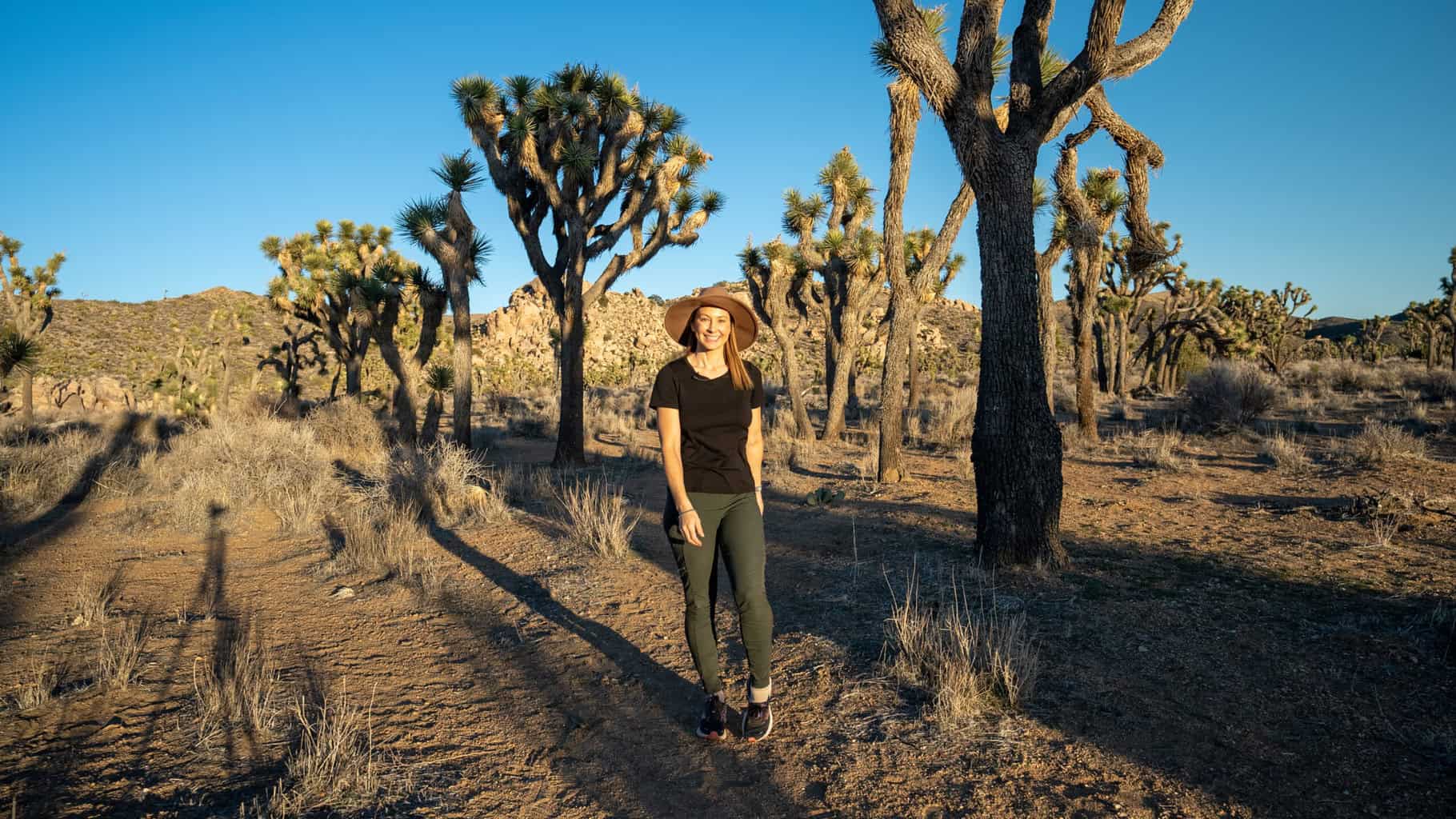
-
- 👉 Find the perfect hotel
- 🚗 Rent a Car
- 🥾 Find a nearby Trail
- 🧳 Pack the perfect suitcase with these packing cubes
- 👉 All the gear you need for your adventure
Day 1: Joshua Tree National Park
From Los Angeles, gear up with all the essentials set out early for Joshua Tree National Park (it’s a 3 hour, 15 minute drive). You’ll be on the border of both the Mojave Desert and the Colorado Desert.
Alien-like Joshua trees with twisted trunks and weathered rock formations (some excellent climbing here!) dot the desert landscape. It lends this small park an otherworldly feel. Look out over Coachella Valley and wind through trails amid massive boulders in Hidden Valley.
You’ll discover palm tree oases in the canyons and incredible views from famous lookout points like Keys View, just off Park Boulevard. Hike to the 49 Palms Oasis to experience the natural wonder of this park at its best! Keep an eye out for wildlife like rattlesnakes and bighorn sheep who roam and slither through the park.
The 1.2-mile Arch Rock Trail is an easy short but scenic hike that’s just right for your one-day venture in Joshua Tree. The moderate 3-mile Ryan Mountain trail takes about 2 hours to summit the mountain for great views before returning.
It’s a 4-hour drive to Death Valley National Park from Joshua Tree, so finish early enough to hit the road and find a place to stay on the way to Death Valley. Panamint Springs is a great option that puts you just minutes from the park.
If you’ve got longer than 7 days and want to camp at Joshua Tree National Park, you’ll be treated to some incredible stargazing. Just be sure to reserve your site in advance! Check out more things to see and do at Joshua Tree National Park here.
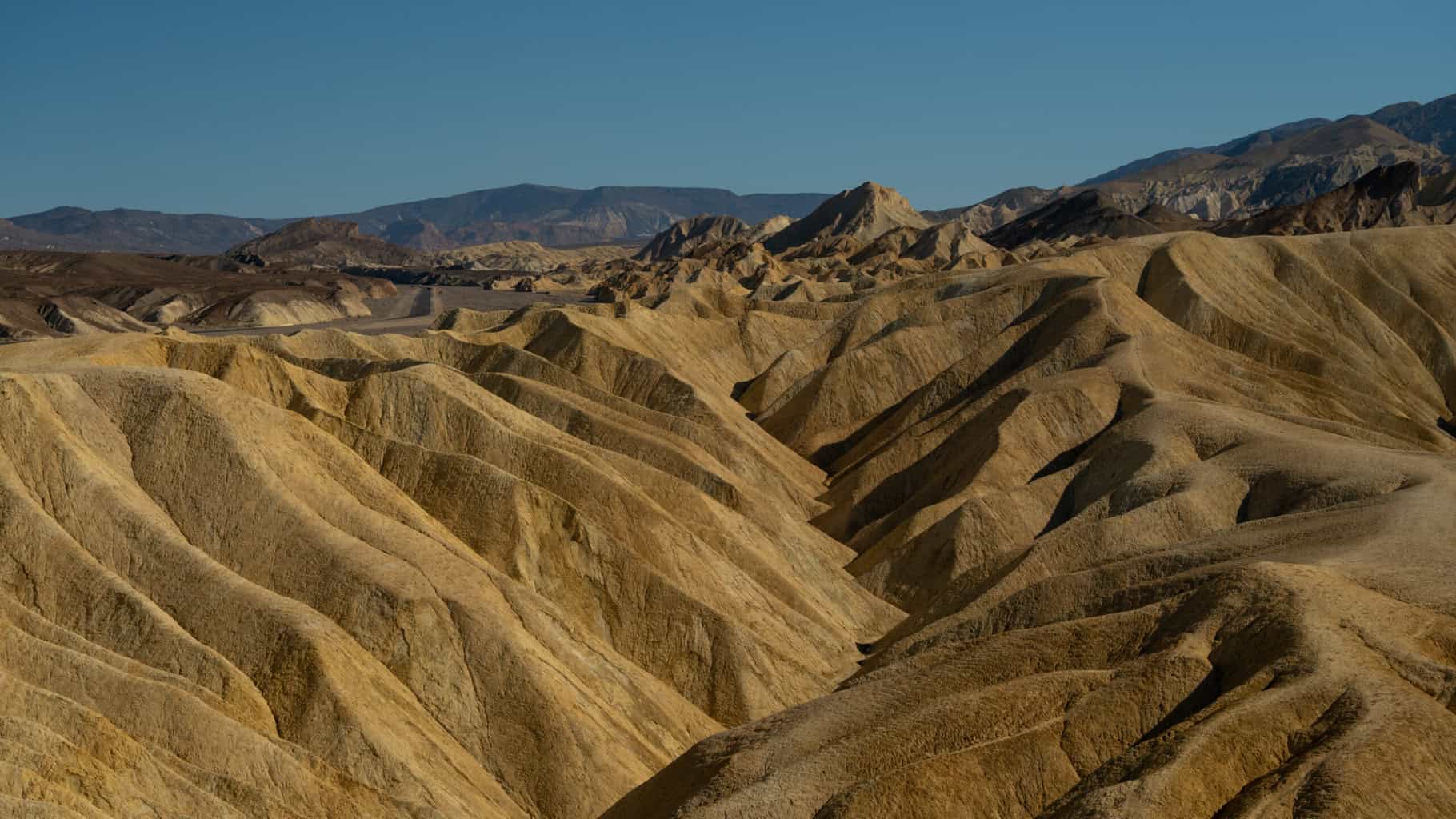
Day 2: Death Valley National Park
If you thought conquering Death Valley National Park in one day wasn’t possible, think again. You can pack a lot into a single day. This is the hottest, lowest, and driest place in the U.S. It’s also the hottest place on Earth with temperatures exceeding 130°F!
It’s a place of extremes with amazing geological formations. You’ll view endless sand dunes, craters, and salt flats from spots like Dante’s View (a great place to start). Badwater Basin is the lowest place in the US and in 2024 flooded forming a shallow lake, that made for some epic views over such a unique landscape. You can see what this was like in this video from Death Valley. From there, drive through the Artists drive, a one way paved road that weaves through a color filled canyon made even better during the early morning shadows.
The Racetrack Playa is a personal favorite of Alice — our founder, avid backpacker, and stunt woman extraordinaire. Here in the dry lakebed (4WD accessible only), you’ll encounter the mystery of the moving rocks. They leave tracks and trails as long as 1,500’! Scientists believe it’s due to unique rain and wind conditions allowing the rocks to slide.
On the eastern side of the park, the massive Ubehebe Crater — a Maar volcano — is 600’ deep and sprawls a mile wide. You can see it from the parking area, but it’s just 1.5 miles down and back to get closer. Look for the hardened cinders on the surrounding hills that tell the story of an explosion long ago.
On the way back, drive through Titus Canyon, check out the Mesquite Valley Sand Dunes, visit Furnace Creek and the Visitor Center, and meander through a forgotten ghost town at Rhyolite. If you have time to spare, visit Zabriskie Point (short ¼ mile hike) for incredible views.
You’re in for another 4-hour drive to reach the next parks, Sequoia & Kings Canyon, so get some rest at one of the 12 first-come, first-serve campgrounds in the park, like Wildrose, or stay at lodges in the park.
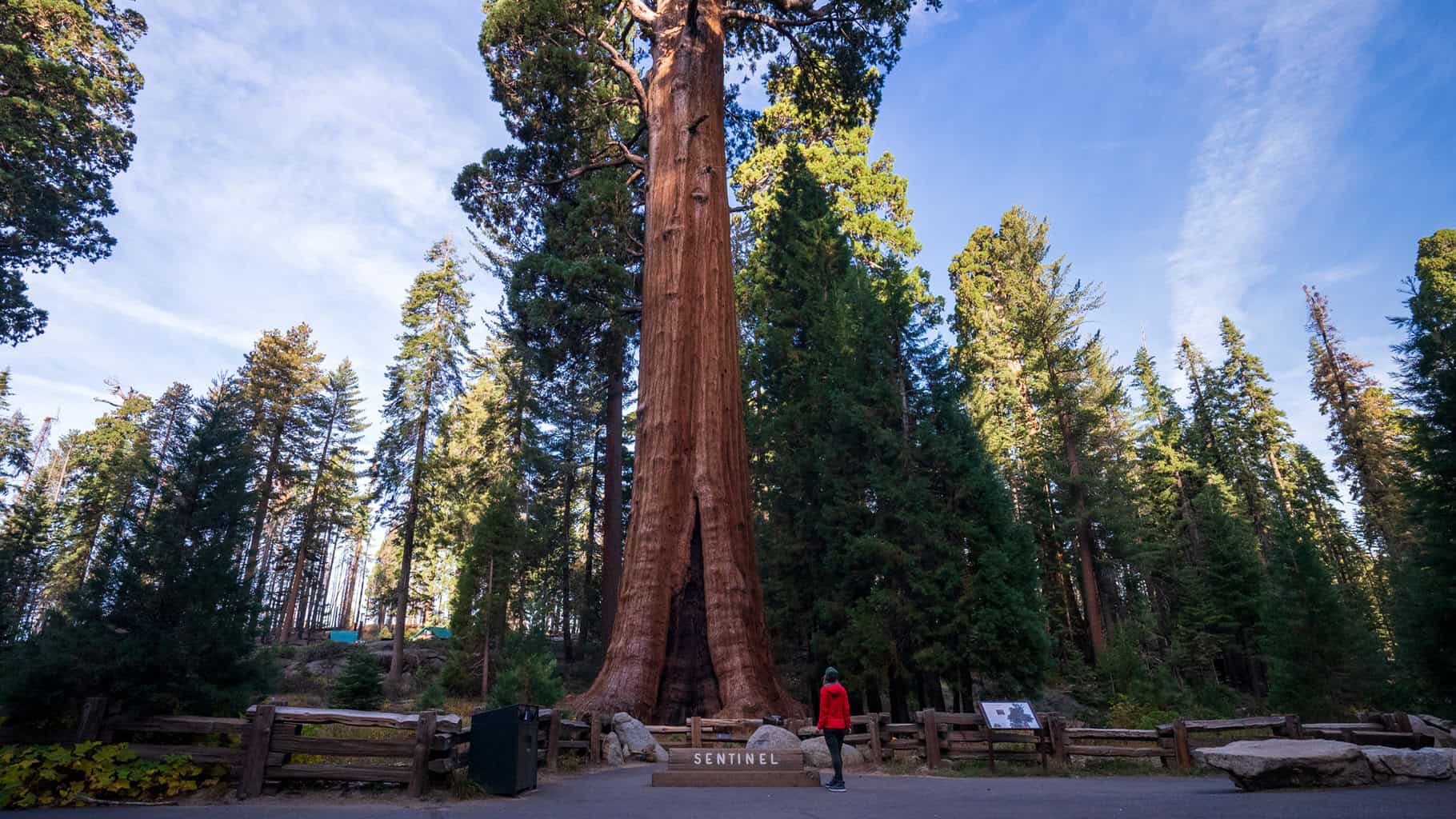
Day 3: Sequoia & Kings Canyon National Parks
Set out as early as possible — go at the crack of dawn if you can — to reach Sequoia National Park (4 hours 30 minutes) from Death Valley. Here in the Eastern Sierra, Sequoia and Kings Canyon national parks are neighbors and beautiful to explore.
Unsurprisingly, you’ll find giant Sequoia trees, craggy canyons traveled by mighty rivers, granite domes, and marble caverns to explore in these parks. But with 7 days of exploring, there’s only enough time to see the highlights in each park.
In Sequoia National Park (check out Alice’s full guide here), take the steep ½ mile Moro Rock trail off Crescent Meadow Road. Check out the Giant Forest Museum here! Traverse 400 stone steps to reach the top of the rock and peer down at Giant Forest sequoia grove, dwarfed by the surroundings. It’s a short, 20-minute hike.
Take the ½ mile Main Trail into the grove and you’ll see the General Sherman Tree — a 268’ tall giant, and the largest single stem tree by volume in the world.
In Kings Canyon, be sure to stop at Canyon Viewpoint to take in the scenery. You can follow the River Trail, a paved 3.9-mile lollipop loop trail to Roaring River Falls, and see gorgeous 40’ falls on Kings River next to Zumwalt Meadow.
You also won’t want to miss the short trail to see the General Grant tree, this tree was dubbed our “Nation’s Christmas Tree” commemorating the park’s creation in 1890.
You could see cougars, bears, and rattlesnakes in the park, so stay aware of your surroundings! You’ve got 14 campgrounds and 4 lodges to choose from for your stay tonight.
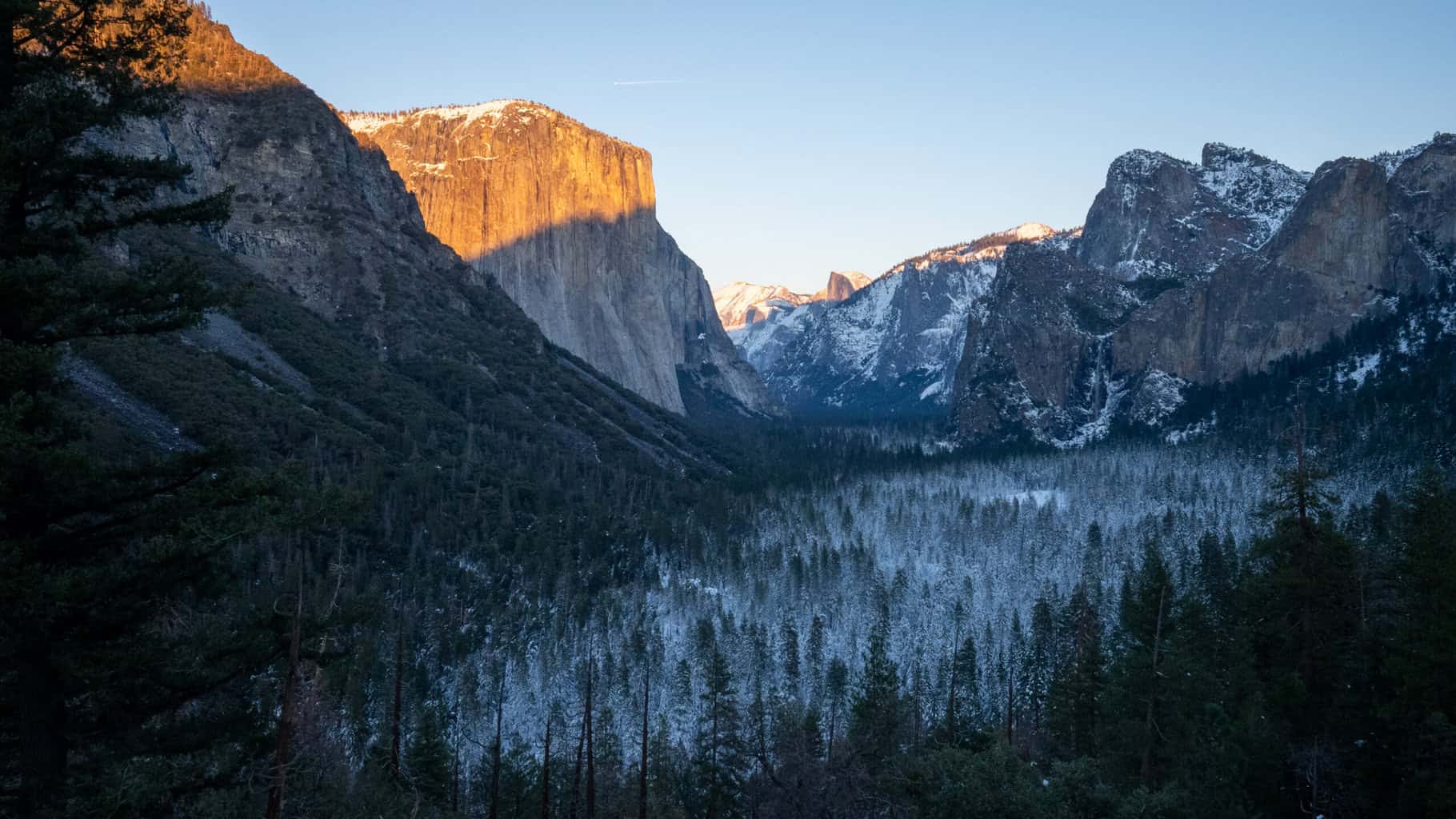
Day 4: Yosemite National Park
Rise and shine because it’s finally time to go to Yosemite National Park! It’s a 2 hour and 20-minute drive north to reach one of my favorite parks — not just in the U.S., but in the world. The scenery here is outstanding and the park’s history is iconic. This is one of the nation’s oldest national parks.
You’ll encounter amazing rock formations like Half Dome and El Capitan, gushing waterfalls, peaceful meadows, the Mariposa Grove lined with giant sequoias, and natural phenomena that delight even the most experienced hikers and backpackers.
The Bridalveil Fall Trail is awesome for a short but memorable hike. It’s less than a mile (about 20 minutes) and brings you right to the 620’ falls, which really start flowing in spring as snow melts.
Half Dome, Yosemite Falls, Sentinel Rock, and Glacier Point are visible from the Cook Meadows Loop trail (another short, easy walk). Look up — you could see hang gliders soaring overhead from Glacier Point!
Take the Valleywide Shuttle to the 5-mile loop to Mirror Lake (2-3 hours) from the Mirror Lake Trailhead. Cut it to a 2-mile out-and-back hike (1 hour) if you’re short on time. From the lake, take in awe-inspiring views of Half Dome from the base, Tenaya Canyon, and Mount Watkins.
Catch one of the most memorable views of the park at Tunnel View off Highway 41. You won’t have to hike to reach the viewpoint. It’s a quick walk from the parking area but tends to get crowded by mid-day. Look for Bridalveil Fall, El Capitan, and Half Dome.
Make sure to make camping reservations in advance (required). Get plenty of sleep in the peaceful campgrounds or lodging options in the park to get ready for the 5.5-hour drive to Lassen tomorrow!
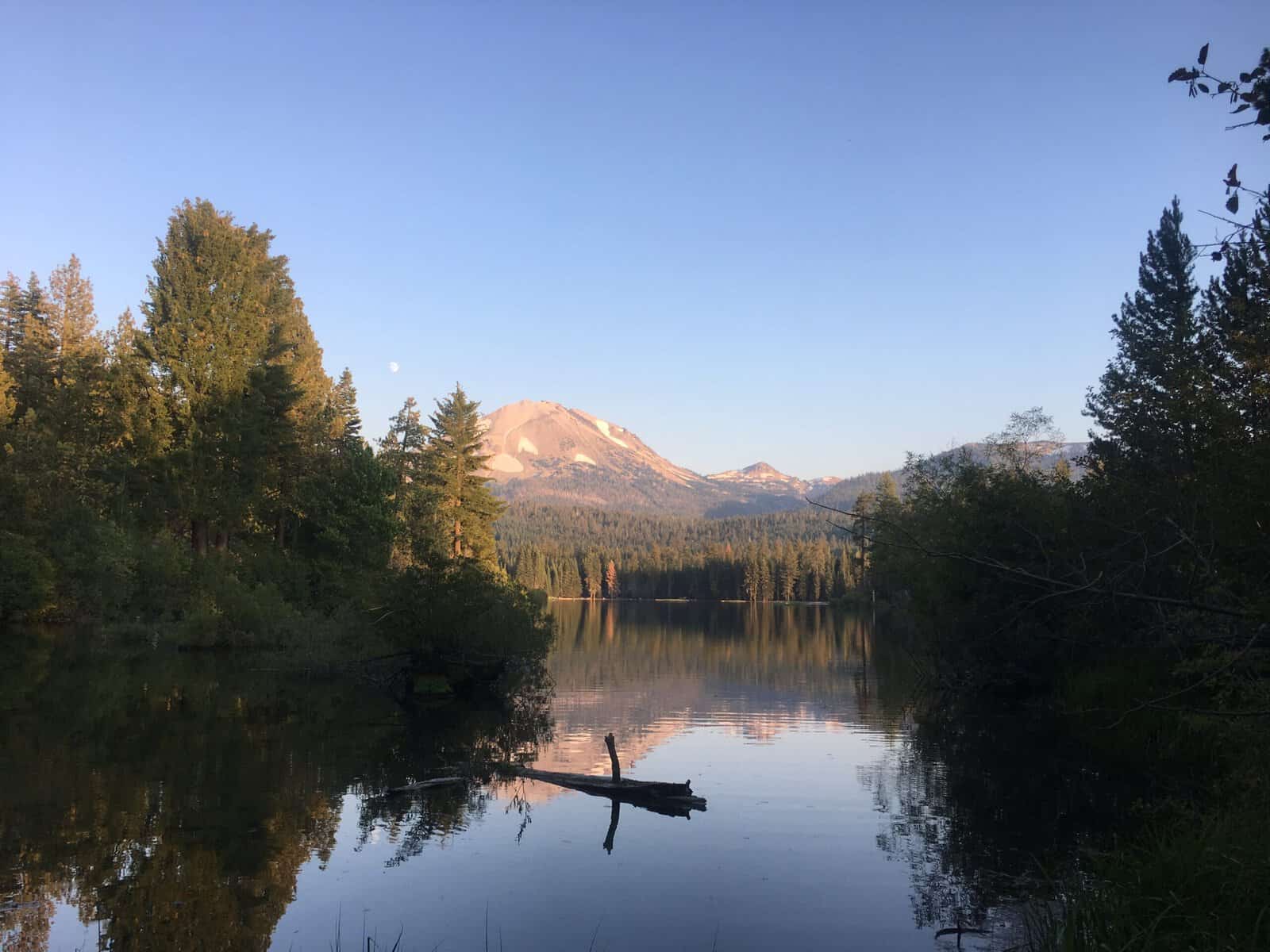
Day 5: Lassen Volcanic National Park
Lassen Volcanic National Park is a bit different from the other parks in California — it’s rarely crowded and you’ll get to see all 4 different types of volcanoes, clear lakes in the mountains, and scenic drives and trails that expose you to the different landscapes in the park.
Spending a day in Lassen means you’ll have to pare down your plans to see the highlights. You have a couple of options. Take the 5-mile hike up to Lassen Peak (4-5 hours) for some incredible views, but it’ll eat up a good chunk of your time.
Another option is taking the 2-hour, 3-mile Bumpass Hell hike with boiling pools and bubbling mud pots, steam rising from hydrothermal fumaroles, and beautifully desolate lava landscapes. Look for Big Boiler, the biggest fumarole in the park with water reaching 332°F. You can check out Alice’s video of Lassen to see more.
Swimming or paddling rental kayaks around Lake Helen or Manzanita Lake are great options for hot days. Manzanita in particular is nice with the Loomis Museum to check out while you hike around the lake, lots of shade on the short 1.8-mile trail, and picnic tables to eat lunch.
Check out the trail to Mill Creek Falls (about 3 hours) or follow the 2.3-mile loop trail to Kings Creek Falls (2 hours) on a warm day! Both take you through mountain meadows and bring you close to pretty waterfalls.
I recommend taking the 30-mile scenic drive from the north to south entrance (45-75 minutes, depending on stops) to see some of the park’s best areas and viewpoints from your car. You can camp here between May/June through September/October to get ready for the 4-hour drive to Redwood National Park tomorrow!
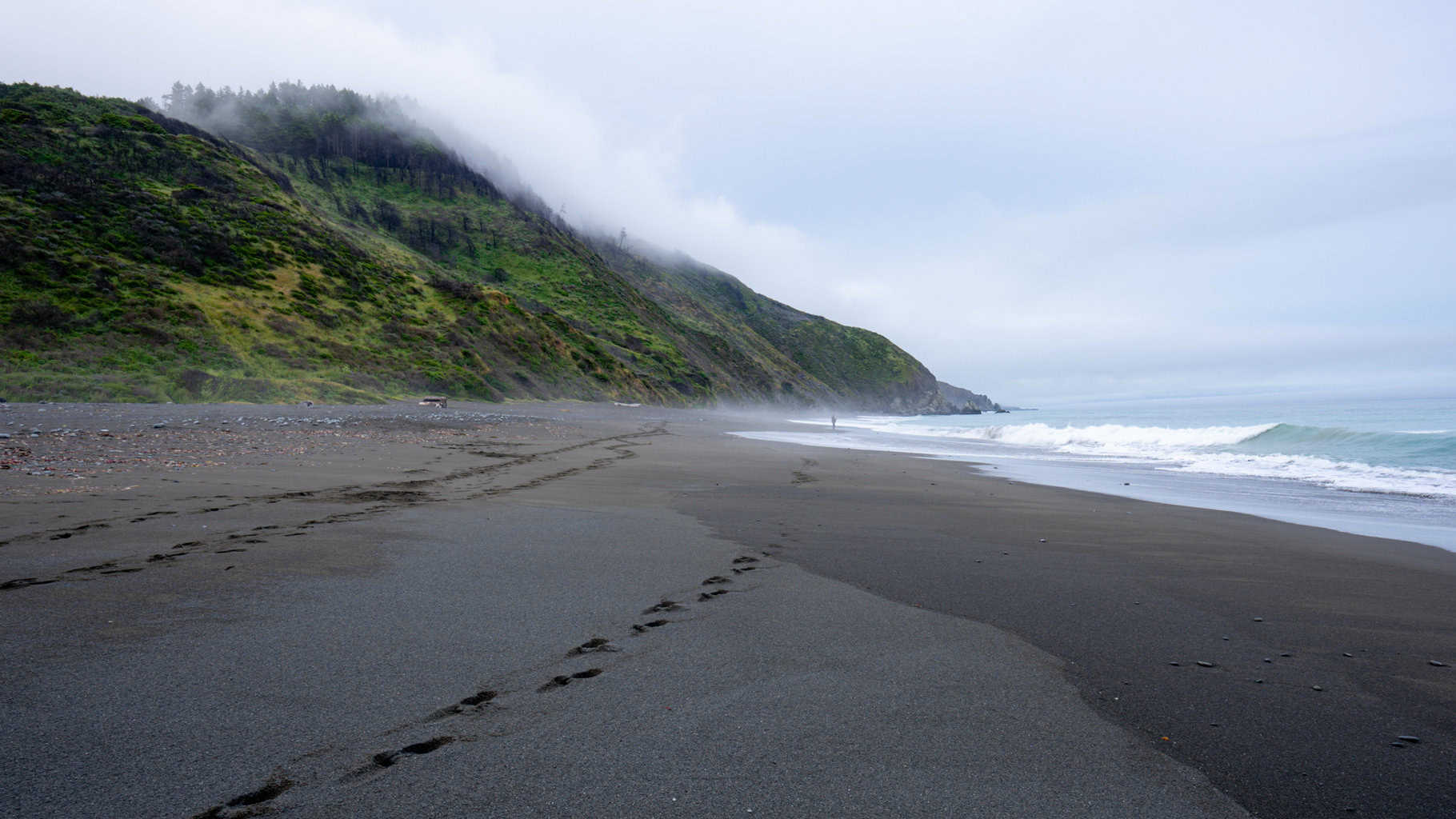
Day 6: Redwood National Park
The final park on the most epic 7-day California national parks itinerary is Redwood National Park. You’ll see some of the biggest and tallest coastal redwoods in the world. It’s actually four parks in one: Redwood National Park and Del Norte, Prairie Creek, and Jedidiah Smith state parks.
You’ll be able to hike grassy prairies, ancient forests, riverside trails, wild coastline, and deep canyons. In Redwood National Park, check out the Stout Memorial Grove Trail (1-2 hours) to see giant trees by the mighty Smith River.
Be sure to take the 10-mile Howland Hill Road scenic drive (45-90 minutes) to squeeze your car between redwoods!
In Prairie Creek, check out the enchanted Fern Canyon (permit required) trail with ferns and greenery draping the steep walls, sparkling like diamonds with morning dew. You can also grab a permit to access the Gold Bluff Beach Day Use Area.
Keep an eye out for amazing wildlife, like Roosevelt elk, bald eagles, and sea lions in the parks. Between November-December and March-April, you can spot migrating gray whales just off the coast.
You’ve got plenty of options for camping in Redwood National Park with 4 developed campgrounds and ample backcountry camping (permit required). Rest up and get ready to head home tomorrow via San Francisco.
Day 7: Return Via San Francisco
It takes 5.5 hours to reach the San Francisco International Airport from Redwood National Park. The drive home can be a little melancholy after such an epic adventure, but I love to use this time to reflect on the journey and my favorite moments from the trip. If you have a few more days take Highway 1 south, stopping in Big Sur or Monterey while driving the coastline all the way back to Los Angeles. Check out this guide to HIghway 1 for more ideas.
The return home reminds me to be full of gratitude for a safe and successful adventure, a chance to experience and touch new places in the world, and a deeper connection with the natural world that makes this planet so fascinating. Until next time — Never Stop Exploring!
Read about all 9 of California’s gorgeous national parks next!
Pin this article!


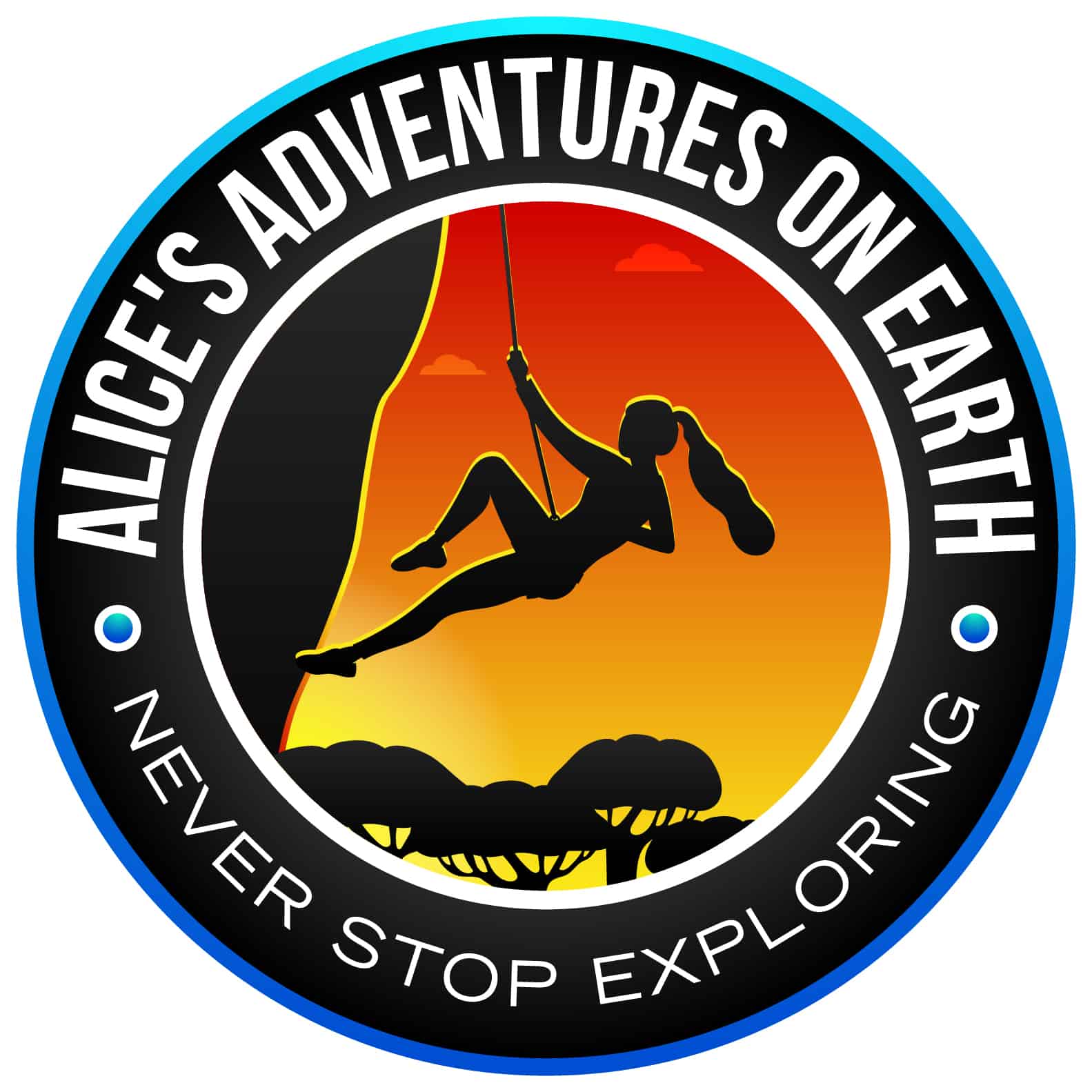
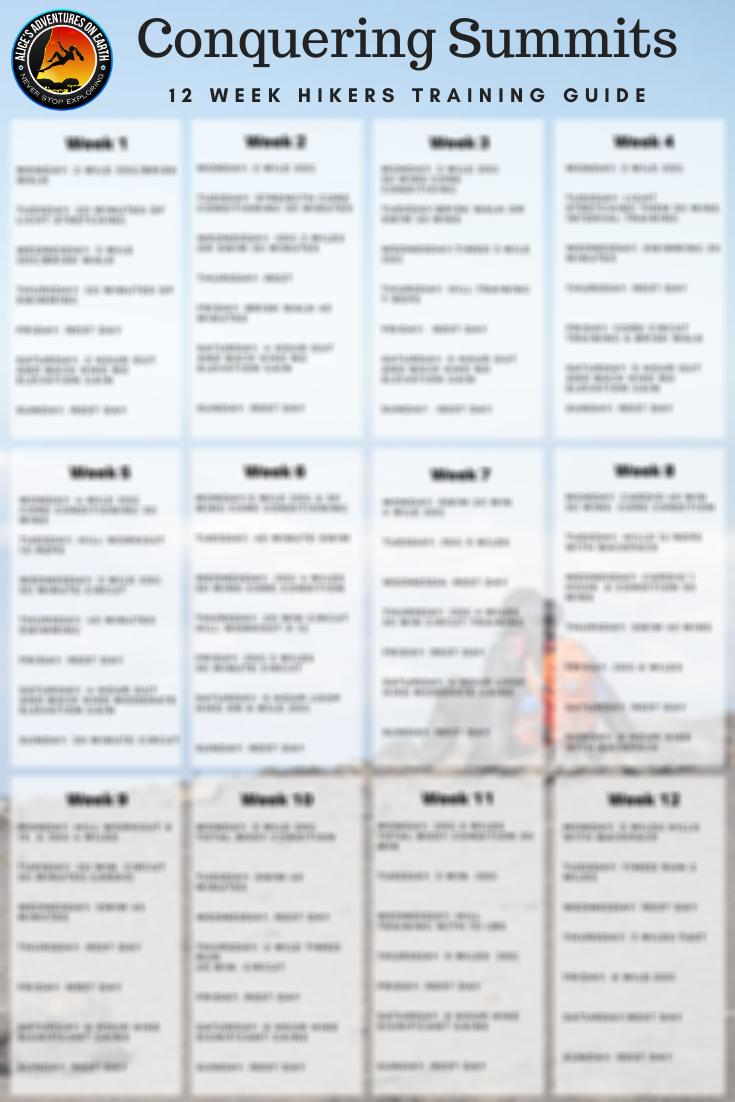


Your article is informative for me and after reading your blog I am keen to visit Death Valley National Park with my father when He comes back after enjoying a trip from New York.
Awesome choice. Sounds like you two have a great trip on the horizon!
The article is very amazing and informative, recently I visited Yosemite National Park. It is known for waterfalls, meadows, cliffs, wildlife, and natural places. It is the gift of God. I had gone there and had a great time there, and on this time, I have decided to go to explore cheap vacation deals from nyc.
If you had another 3-4 days which parks would you extend your stay?
I would spend more time exploring Yosemite and the areas near Mammoth, CA.